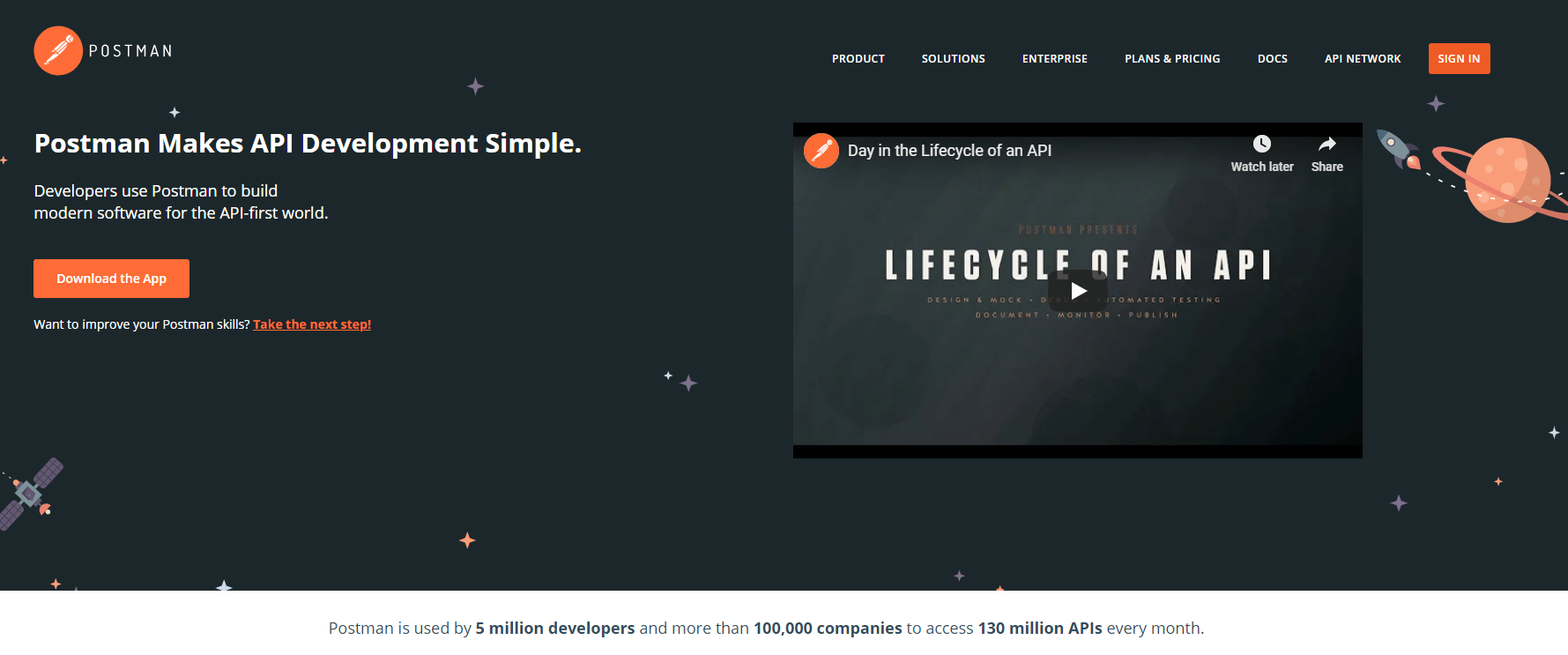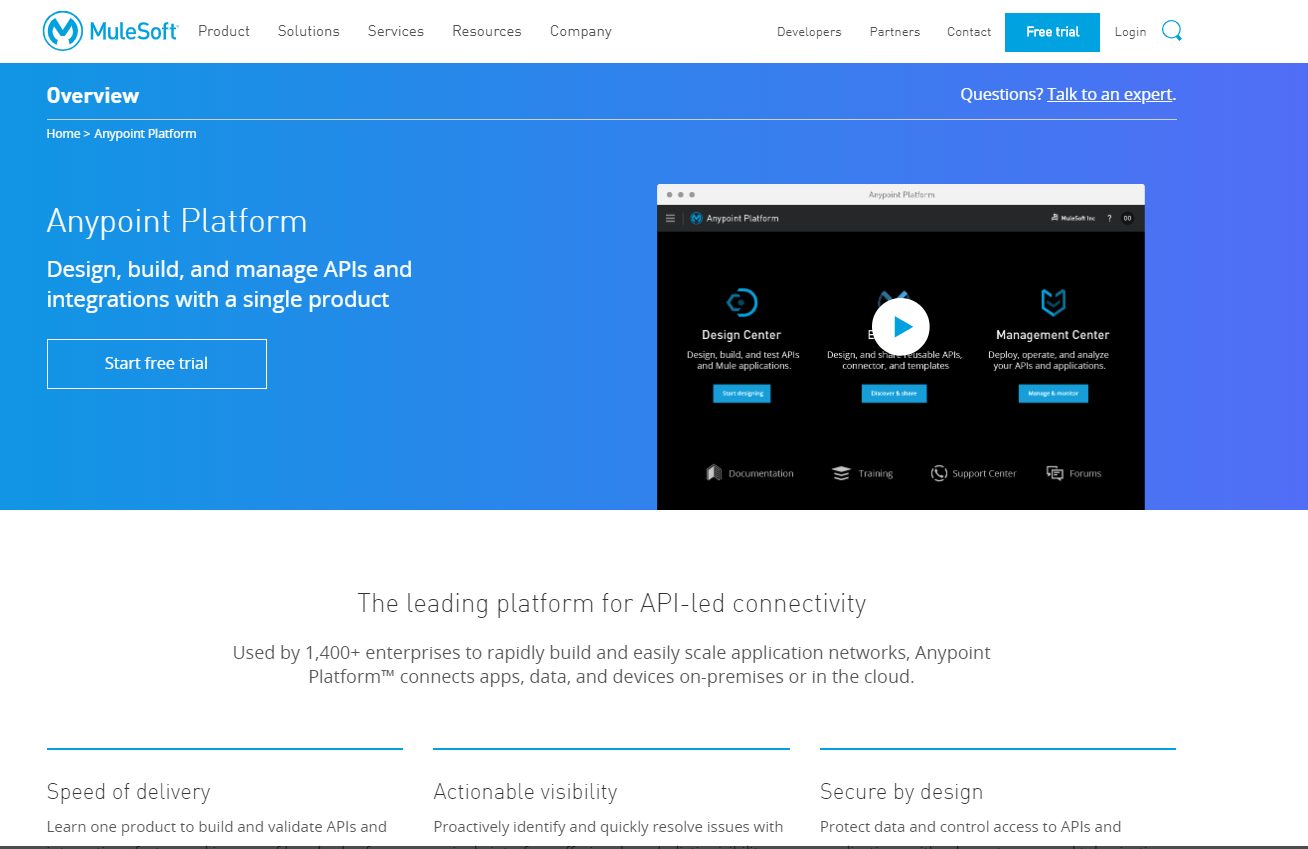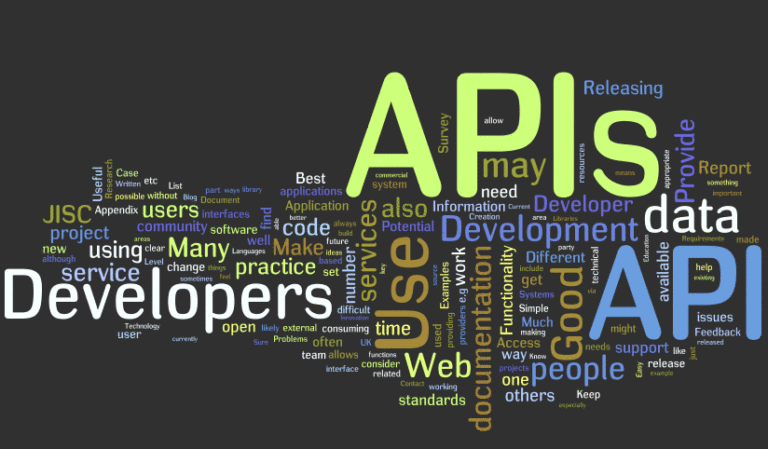Introduction
Web-Based APIs
It’s been more than twenty years since Roy Fielding released a dissertation that described the REST API architecture1. During the following decade, companies began to see the utility of web APIs in large enterprises. Additionally, in the second half of the decade, tech giants opened large web-based APIs to the public. In 2006, Facebook and Twitter released the first versions of their public APIs, allowing developers to pull data from the platform2.
After a decade of API growth, the term ‘microservices’ was coined to describe business applications’ decoupling into smaller API services. This technique was more notable pioneered by Netflix in 20093.
Along the way, APIs became synonymous with web-APIs that access data and resources over a network, and companies started creating and consuming a lot of web-based APIs.
API Management
The rise of APIs paralleled the rise of cloud computing. AWS was early to the game with the introduction of EC2 storage in 2006, but by 2010, Google and Microsoft would introduce their own cloud-computing platforms4. This includes smaller providers, like Linode, which virtualized its servers in 20085.
A decade ago, the explosion of APIs fostered the creation of API marketplaces, like Rapid in 2014—the world’s largest API marketplace—and API specifications like the Swagger UI (acquired by Smartbear in 20156). In response, best-practices, automation tools, and other new technologies came to aid a growing sector.
Many of the new technologies and processes involved in designing, developing, testing, and updating APIs in the cloud became loosely known as API management.
Market Growth
The writing was on the wall—and in market estimates—with predictions for API management spending to quadruple between 2014-20207. Is it any wonder why Google bought API management company, Apigee in 2016 for $625 million8?.
More recently, in 2020, KBV research predicted the global API management market size to reach $6.2 billion by 20249. With companies increasing their API management investment, top providers are continuing to invest in API management improvements. For example, in 2021, RapidAPI announced the acquisition of Paw, a macOS application for designing, testing, and managing web APIs10 with plans to extend to tool to other major platforms.
The API management market is growing, and it can be difficult to sift through the different solutions available. Therefore, we’ve compiled a list of some of the top API management tools available today.
Top API Management Tools
1. RapidAPI
RapidAPI is an API platform and marketplace for connecting to and managing APIs
across multiple cloud environments. The company began as an API marketplace for connecting to and managing thousands of APIs and has grown the platform to include more features like RapidAPI teams and enterprise hub.
More recently, RapidAPI has made a big move towards full API management with the introduction of RapidAPI Testing and the acquisition of Paw. Paw was previously an API design software for macOS, but now—with the acquisition—is expanding into other large platforms like Linux and Windows.

The most exciting product coming out of RapidAPI is the enterprise hub. The hub is designed for consuming, publishing, and managing many APIs at scale. What makes the hub the most effective is the integration with the other parts of RapidAPI:
- Connecting to the marketplace
- Testing APIs
- Designing APIs
- Governing APIs
- Multiple API Gateways

You’ll have to contact RapidAPI for pricing on the enterprise hub, but RapidAPI Testing has a free tier that allows for an unlimited number of tests with 100,000 API calls a month.
Access to the marketplace is free, with different APIs offering their own pricing plans. Additionally, creating an organization to manage team members and monitor internal and external APIs is free!
2. Tyk
Tyk is an API management platform that includes an API dashboard, a developer portal, and an open-source API gateway. The company is a cloud platform but has options for self-hosting different products.
Tyk’s API gateway is the essential component of the whole API management platform. The gateway is open-source, so it’s free to download and use. However, you’ll have to use other programs, like Tyk Pump, Tyk Sync, and Tyk CLI.
Tyk offers the Tyk Cloud with SLAs, auto-scaling, and DevOps features for automation for enterprise users.

Tyk offers a 14-day free trial with access to all features. However, for more detailed pricing comparisons, you’ll have to contact the company.
Browse Top Tyk Alternatives
3. Apigee API Management
Apigee is a Google Cloud product for design, securing, scaling, and analyzing APIs. Therefore, using the product takes you into the Google Cloud world of Project IDs, application management, and lots of documentation. One of the main benefits of Apigee is Apigee Hybrid. This gives companies the ability to choose whether to host on-premises, in the cloud, or a hybrid of the two.
Like many cloud providers, Apigee offers a user-interface for visually crafting API policy. The product’s security layer supports SAML, Oauth2, API keys, and content-based security.
Also, Apigee publishes helpful reports on API security, management, and lifecycle management.

Apigee has four different options for pricing: Evaluation, Standard, Enterprise, and Enterprise Plus. Pricing for the top three plans is not provided on their website. However, the Evaluation plan can be accessed for 60-days offering two environments and 100,000 API calls per month (up to 60-days).
Browse Apigee Alternatives
4. Azure API Management
Azure API Management is made up of three components. The API gateway, Azure portal, and the developer portal. The Azure gateway feature can route APIs calls, verify API keys, transform headers, and set policies by API or API endpoint.
You’ll have to take on the Azure portal for API access control and creating API products for monetization. The portal allows developers to access documentation, view analytics, subscribe for API keys, and interact with APIs.
Azure structures its API management service around Products and Groups. Products consist of APIs that are open or protected and are how subscriptions are configured and approved. Groups control who can see certain products. This allows administrators to control what developers can see or open up API visibility to potential customers.

Azure API Management has six different pricing options ranging from the Consumption plan costing $4.20 per million (after the first million) up to the Isolated enterprise production plan, which price per unit is TBA.
If it’s your first time using Azure, you can sign up to receive a $200 credit for 30-days and 12-months of select popular free services.
Browse Azure API Management Alternatives
5. Postman
Postman started as a simple HTTP client for testing web services but has become a complete API development environment (ADE). The software provides various tools developers can use to streamline the API development process and collaborate on projects. With Postman, developers can complete many tasks such as design and mock APIs, create collections of API endpoints, debug APIs, and monitor APIs. Postman also generates browser-based, hosted API documentation automatically.

Two of the most popular Postman features are collections and the ability to create environment presets. Collections are groups of API endpoints that can be run together in a specific sequence. A Postman blog post describes a collection as “an executable description of an API.”
Environment presets allow developers to create and save variables that can be used everywhere in the request builder where text can be added. Variables can be used in many places, such as headers, URL parameters, header presets, and request body. Environment presets and variables allow developers to switch between development/testing and production environments quickly.
Postman pricing includes a free plan and two paid plans—Postman Pro and Postman Enterprise—including additional features.
Related Resources:
6. IBM API Connect
IBM offers a comprehensive API management solution for the entire API lifecycle. The platform provides the ability to create, secure, and monetize APIs in the cloud. Additionally, it plays well with IBM’s Cloud Pak, which can handle integrations across an application for event streaming, data transfer, end-to-end security, and testing.
Also, API Connect supports multi-cloud environments, product creation, analytics, and API gateway policies. With IBM Connect, users can access the manager dashboard, IBM DataPower Gateway, developer portal, developer toolkit, and configurable cloud manager.

The next plan up is the enterprise plan that offers pay-as-you-go ($1 per 1,000 API calls monthly), or you can contact IBM for other plan arrangements.
You can try API Connect’s Lite plan, which offers a free edition of the product. This includes 50,000 API calls per month but excludes analytics and gateway policies.
7. AWS API Gateway
Amazon’s API Gateway gives developers the ability to create, publish, maintain, monitor, and secure APIs. Although it’s not mentioned upfront, you can monetize APIs on the Amazon Marketplace using the gateway.
The product is designed to work with more traditional RESTful APIs and with WebSocket APIs. Like other cloud providers, AWS supports integrations with other products across the platform. This include:
- AWS Cloud Map
- AWS Authorization
- Amazon CloudWatch

AWS has a generous free tier for first-time AWS customers; the plan includes one million API calls for REST APIs, one million API calls for HTTP APIs, and one million messages and 750,000 connection minutes for WebSocket APIs per month for up to 12 months.
If you have already exhausted your free tier access, you can expect to pay for usage based on your API type (HTTP, REST, WebSocket).
8. Mulesoft Anypoint Platform
The MuleSoft Anypoint Platform is an integration platform that allows companies to connect applications whether those applications are cloud-based, on-premises, or deployed on a hybrid environment. Enterprises can use this platform to design, build, and manage APIs. This platform can also be used to re-architect legacy systems to be more agile and able to work with modern technologies and applications.

Two of the most popular features of the MuleSoft Anypoint Platform are the Anypoint Connectors and the API Portal. Anypoint Connectors are pre-built, out-of-the-box assets and tools that connect different systems allowing organizations to implement integrations quickly. Building integrations from scratch is time-consuming, and the connectors allow many types of integrations to be created without having to spend a lot of time writing code. You can choose from a wide variety of pre-built connectors or build your own connector with the Anypoint Connector DevKit.
The API Portal allows organizations to build and launch a well-designed portal that provides all the tools needed for developers to consume the APIs. With the API Portal, enterprises can ensure easy onboarding for all their APIs, whether those APIs are public or private. The Portal comes with many features, including automatic generation of documentation from an API specification such as RAML or OpenAPI (formerly known as Swagger). The Portal can generate SDKs for ten different programming languages automatically.
The pricing for MuleSoft Anypoint is not public at this time. However, the company does offer a free trial to access the Anypoint Platform.
Browse Mulesoft Alternatives
9. Software AG
Software AG offers an API management platform for securing, monitoring, cataloging, and monetizing web APIs and applications. The platform offers the webMethods product series. This product series includes an API portal, gateway, micro gateway, and AppMesh. Microgateways are smaller gateways for a couple of microservices with a lesser chance of overloading.
SoftwareAG also hosts a community called Engage for promoting, marketing, evangelizing, and communicating with the other developers or customers.

Software AG provides no pricing information for their products.
10. Boomi
Boomi is a platform, acquired by Dell in 201011, offering an API management platform for designing, securing, and scaling APIs. The platform supports hybrid cloud environments and API testing. You can use Boomi’s visual API experience for configuration, manage security through the gateway, and enable analytics monitoring through the dashboard.

Boomi offers five different editions linked to different plans. Boomi provides no pricing information, but the company does offer a free trial.
Summary: RapidAPI vs Tyk vs Apigee vs Azure vs Postman vs IBM vs AWS vs Mulesoft vs Software AG vs Boomi
Footnotes
1 Fielding, Roy Thomas. Architectural Styles and the Design of Network-based Software Architectures. Doctoral dissertation, University of California, Irvine, 2000.
2 Hawkins, Matt. “Council Post: The History and Rise of APIs.” Forbes, www.forbes.com/sites/forbestechcouncil/2020/06/23/the-history-and-rise-of-apis/?sh=56d636f045c2. Accessed 26 Feb. 2021.
3 “Microservices Architecture – the Definitive Guide | LeanIX.” Www.leanix.net, www.leanix.net/en/microservices-architecture. Accessed 26 Feb. 2021.
4 Wikipedia Contributors. “Timeline of Amazon Web Services.” Wikipedia, Wikimedia Foundation, 27 July 2019, en.wikipedia.org/wiki/Timeline_of_Amazon_Web_Services.
5 “Linode.” Wikipedia, 26 Jan. 2021, en.wikipedia.org/wiki/Linode. Accessed 26 Feb. 2021.
6 “SmartBear Assumes Sponsorship of Swagger API Open Source Project.” SmartBear Software, smartbear.com/news/news-releases/smartbear-acquires-swagger/. Accessed 26 Feb. 2021.
7 Yamnisky, Michael. “The API Management Solutions Market Will Quadruple by 2020 as Business Goes Digital.” Forrester, 8 June 2015, go.forrester.com/blogs/15-06-07-the_api_management_solutions_market_will_quadruple_by_2020_as_business_goes_digital/. Accessed 26 Feb. 2021.
8 “Google to Buy Cloud Software Company Apigee for $625 Million.” CNBC, 8 Sept. 2016, www.cnbc.com/2016/09/08/apigee-to-be-acquired-by-google-in-625-million-all-cash-deal.html. Accessed 26 Feb. 2021.
9 “API Management Market Size, Share & Industry Analysis Report, 2024.” KBV Research, www.kbvresearch.com/api-management-market/. Accessed 26 Feb. 2021.
10 “RapidAPI Acquires Leading API Design Solution Paw, Extends Next-Generation Platform across the API Development Lifecycle.” Www.businesswire.com, 10 Feb. 2021, www.businesswire.com/news/home/20210210005266/en/RapidAPI-Acquires-Leading-API-Design-Solution-Paw-Extends-Next-Generation-Platform-Across-the-API-Development-Lifecycle. Accessed 26 Feb. 2021.
11 “Dell Boomi.” Wikipedia, 31 Oct. 2020, en.wikipedia.org/wiki/Dell_Boomi. Accessed 26 Feb. 2021.
FAQ
What are API Management Tools?
API Management is a set of processes, policies, principles, and practices that allow owners to gain control over their API. The integrated systems that make-up API management are born out of a large set of questions that project managers, developers, and team leads hope to answer.
What are the best API Management Tools?
Some of the top API Management Tools & Solutions include RapidAPI, Tyk, Apigee, and more you can find within this article.
What is the difference between API Management and API Gateway?
API Management is a set of processes, policies, principles, and practices that allow owners to control their API. The API gateway is a server, application, or resource that acts as a proxy for API resources. It controls, facilitates, and manages incoming traffic. It is used for processes like authorization, rate limiting, and aggregating API results.







thank You For Sharing Such Nice and Great Information